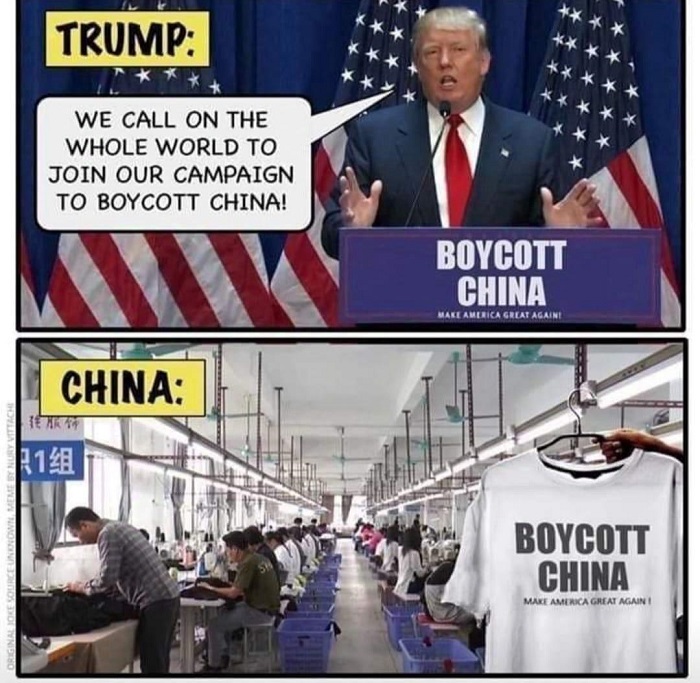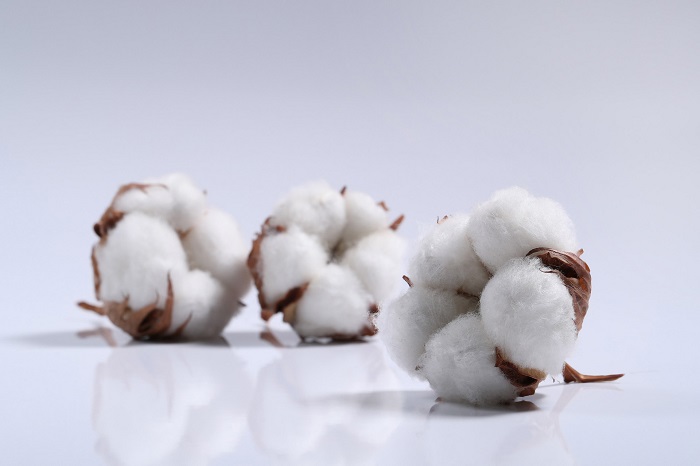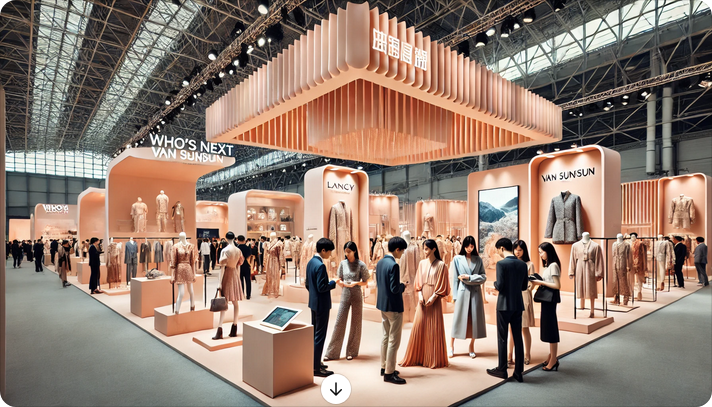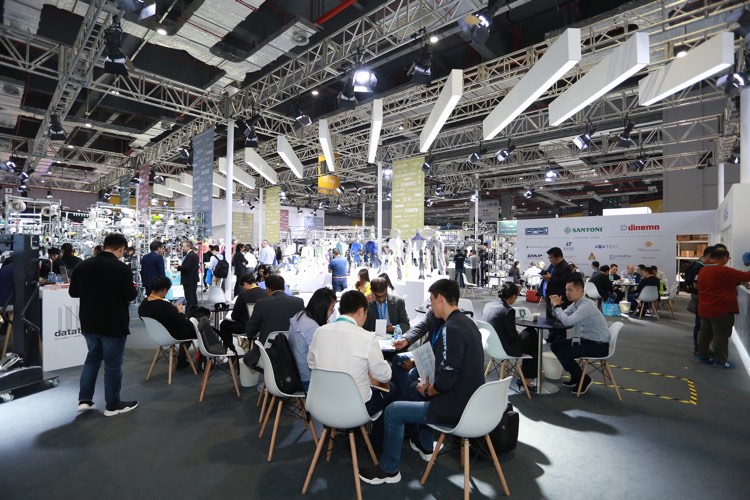FW
In a letter to Prime Minister Narender Modi, Nana Patole, President, Maharashtra Congress, urged him to halt imports of cotton bales in the state, and instruct Cotton Corporation of India (CCI) to increase cotton procurement at the minimum support price (MSP), to support farmers and stabilise market prices.
The central government needs to intervene urgently to assist cotton farmers in Maharashtra, emphasizes Patole. Currently, cotton is being sold below its Rs 7,122 per quintal MSP at a price of around Rs6,500-6,600 per quintal. This is causing many farmers to hold onto their stock, he adds. The CCI also has unsold stock of 1.1 million in reserve.
In such conditions, importing cotton could not only disrupt the domestic market but also harm farmers, warns Patole. Cotton farmers are already struggling with low prices, a 12-18 per ent GST on agricultural equipment, and damage to crops from unseasonal rains affecting 1.9 million hectares this year, he notes.
The central government’s announced compensation remains unimplemented, according to Patole, who criticised the Pradhan Mantri Fasal Bima Yojana for favoring insurers over farmers.
Second-largest cotton producer in India, Maharashtra has over four million farmers involved in cotton cultivation. Despite its significant cotton output, the state is anticipated to have imported 2.2 million bales, raising fears offurther price drops.
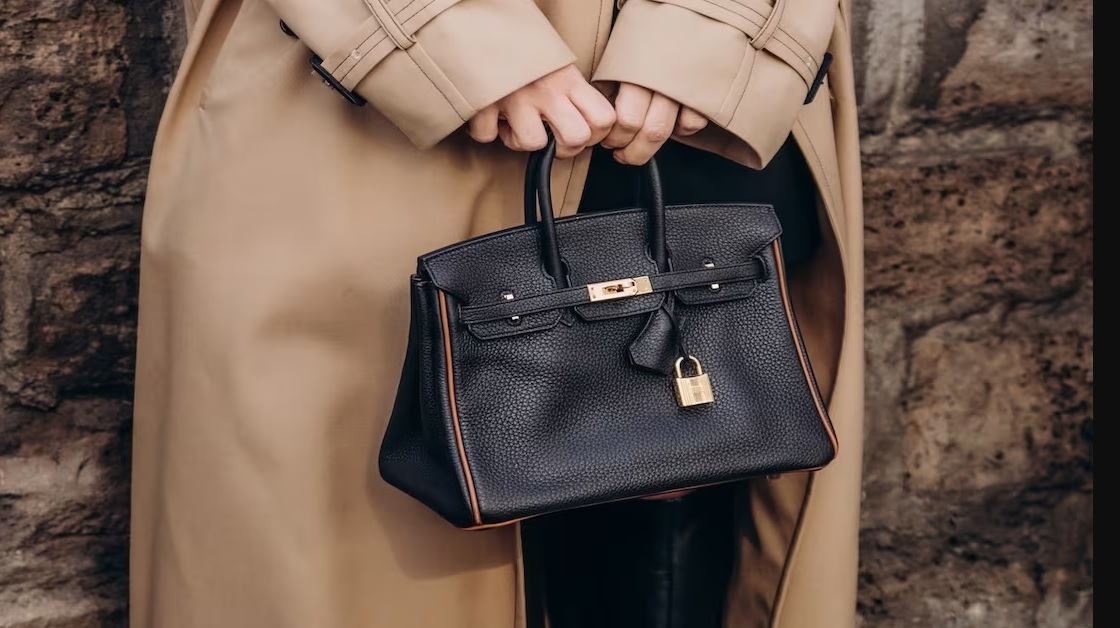
While other luxury brands struggle, Hermès continues to defy expectations, posting strong third-quarter sales growth. What's their secret? The luxury sector is facing headwinds. A downturn in China, coupled with global economic uncertainty, has seen many prominent brands falter. Yet, amidst this turbulence, Hermès stands tall. The French maison, renowned for its iconic Birkin bags, reported an 11.3 per cent rise in third-quarter sales, reaching €3.7 billion. This performance significantly outshines rivals like LVMH, which missed expectations and Kering, which issued a profit warning.
Hermès thrives while others struggle
Hermès 11.3 per cent rise in Q3 sales, exceeded analyst expectations. This strong performance is a testament to the brand's enduring appeal, particularly amongst its ultra-wealthy clientele. In stark contrast, industry giants like LVMH and Kering are grappling with declining sales and dwindling consumer confidence, particularly in China. LVMH missed revenue expectations, while Kering issued a profit warning, highlighting the depth of the challenges facing the sector.
Table: Q3 sales growth top luxury brands
|
Brand |
Q3 Sales Growth (%) |
Stock Performance (YTD) |
|
Hermès |
11.3 |
+9% |
|
LVMH |
Missed expectations |
-15% |
|
Kering (Gucci) |
Operating income to halve |
-40% |
|
Moncler |
-3.30% |
There are several reasons for Hermès' remarkable resilience. First and foremost is its exclusivity and timeless appeal. Hermès's meticulously crafted products, like the iconic Birkin bag, are synonymous with exclusivity and timeless elegance. This enduring appeal ensures consistent demand, even during economic downturns. Furthermore, Hermès' classic designs transcend fleeting trends, ensuring enduring appeal.
Its strategic price positioning is another reason. Hermès caters to an ultra-high-net-worth clientele, a segment less susceptible to economic fluctuations. Their products, often considered investment pieces, retain value and desirability. While ‘aspirational’ buyers might be pulling back, Hermès' core customer base remains strong. Then there is the whole aspect of controlled production and scarcity as Hermès maintains strict control over production, creating an aura of scarcity and desirability. This strategy fuels demand and reinforces the brand's exclusive image. While renowned for its handbags, Hermès boasts of a diverse product offering spanning silk scarves, jewelry, ready-to-wear, and homeware. This diversification cushions the impact of slowing demand in specific categories.
Its focus on heritage and craftsmanship is another factor contributing to growth Hermès emphasizes its rich heritage and artisanal craftsmanship. This commitment to quality and tradition resonates with discerning consumers seeking enduring value. And despite the slowdown in China, Hermès continues to invest in the market, demonstrating long-term confidence in its growth potential. The recent opening of a store in Shenzhen and plans for a Beijing flagship demonstrates the brand's long-term commitment.
Interestingly, LVMH, the world's largest luxury conglomerate, felt the pinch of declining Chinese consumer confidence. Its fashion and leather goods division, home to Louis Vuitton and Dior, experienced a slowdown. In contrast, Hermès, with its focus on exclusivity and high-net-worth individuals, weathered the storm more effectively. This divergence highlights the power of Hermès' strategic positioning.
Lessons for other brands
The Hermès story offers valuable lessons for other luxury brands navigating the current turbulent landscape.
Cultivate brand heritage and craftsmanship: A strong brand heritage and a commitment to quality craftsmanship can create lasting appeal and customer loyalty.
Embrace exclusivity and scarcity: Strategic control over production and distribution can enhance brand desirability and maintain price integrity.
Focus on High-Net-Worth Individuals: Catering to a less price-sensitive clientele can provide a buffer against economic downturns.
Invest strategically: Maintaining a long-term vision and investing in key markets, even during challenging times, can ensure future growth.
Hermès' continued success amidst a challenging market underscores the power of a strong brand, strategic pricing, and a focus on exclusivity. As other luxury brands grapple with declining sales, Hermès serves as a shining example of resilience and adaptability in the face of adversity.
Polyester staple fibre (PSF) manufacturers in India have stabilized prices at Rs 93,000-Rs 95,000 per ton (around $1,105-$1,129) for Nov’24, after aRs1,000-per-ton hike implemented in mid-October. This is a result of the cost of purified terephthalic acid (PTA), a key input in the raw fiber declining slightly by Rs 400 per ton to Rs70,100 ($833.42) in the domestic market.
Despite these recent price adjustments, India’s PSF and raw material costs remain out of sync with global prices and crude oil trends. Indian manufacturers argue that elevated domestic raw material prices are limiting their competitive edge, particularly in export markets for garments, fabrics, and yarn. The cost structure, influenced by higher domestic pricing for PSF and PTA, poses a challenge for Indian exporters aiming to match international rates.
Highlighting the difficulties faced by Indian manufacturers, RKVij, President Emeritus, Textile Association of India (TAI) and Secretary General, Polyester Textile and Apparel Industry Association (PTAIA), says, the price gap between domestic PTA and imported PTA prevents Indian companies from offering competitive rates for exports. While domestic PTA is priced at Rs70,100 per ton, imported PTA, largely from China, is available at Rs66,500 ($790) per ton.
As of November, domestic PSF prices remain around Rs100,500 ($1,194) per ton, although discounts bring effective rates down to Rs 93,000-Rs 95,000. In comparison, imported PSF from China is priced slightly lower, at Rs 90,000-Rs 91,000 ($1,070-$1,081) per ton, making imports more attractive for some manufacturers.
Additional raw materials in the polyester value chain, Monoethylene glycol (MEG) and MELT, are priced domestically at Rs 58,800 ($699) and Rs80,290 ($954) per ton, respectively. The prices of MEG rose by Rs300 per ton, while MELT prices dipped by Rs340. However, due to licensing requirements under the QCO, imported MEG is often more competitively priced. Moreover, MEG is only a minor component in MELT production, further complicating cost management.
Fluctuations in crude oil, a primary input in polyester manufacturing, have not influenced domestic PSF pricing in recent months. For instance, WTI crude oil dropped from $74.38 per barrel in early October 2024 to $70.73 in early November, yet domestic PSF and upstream materials have not mirrored this trend.
The upcoming Heimtextil exhibition will focus on international exhibitors and upcoming designers in contract textiles.
To be held from Jan 14-17, 2025in Franfurt, Heimtextil will offer architects, interior designers and hospitality experts,the entire spectrum of textile furnishings in one place,along with an informative comprehensive program, design and trend inspiration. The exhibition will also feature latest products incontract textiles ranging from wallpapers, curtains and sun protection, upholstery and outdoor fabrics, bedding, bed linen, bathroom textiles, mattresses and sleeping systems, fibres and yarns to carpets.
A champion league of home textiles, contract textiles cater to the highest demands in terms of quality, functionality, safety and design. Exhibitors launch innovative products in this field every year alongwith the latest development in functionality.
The exhibition will feature products from exhibitors including Atenzza Outdoor (Spain), Aydin Tekstil, Barine (Turkey), Bedding House (Netherlands), Cabanes & Ortuno (Spain), Elastron Portugal, Englisch Dekor (Austria), Futura Leathers (Italy), Gebrüde rMunzert, Höpke Textiles (Germany), Indetex (Belgium), Indorama Ventures Fibers Germany, Kücüker Tekstil (Turkey), Lameirinho (Portugal), Marburger Tapetenfabrik (Germany), Martinelli Ginetto (Italy), Mundotêxtil (Portugal), OBB Oberbadische Bettfedern fabrik (Germany), Têxteis J.F. Almeida (Portugal), Textil Blanca 1941 (Spain) and The Wallfashion House (Belgium), etc.
It will also include a program tailored to the needs of architects, interior designers and hospitality experts. The program will comprise lectures and guided tours on topics such as AI and sustainability as well as unique special presentations. Some of the major attractions of the exhibition include the Interior. Architecture Hospitality Library in Hall 4.0, the Trend Arena in Hall 3.0 and the ‘among-us’ installation by Patricia Urquiola in Hall 12.0.
India needs $6.5 billion funds to reduce carbon emissions by 45 per cent in the textile and apparel sector by 2030, as per a recent report from the Apparel Impact Institute (Aii) and Development Finance International Inc (DFI).
As per the report, India currently has funds worth $2.5 billion. However, it still requires substantial financingworth $4 billion. Titled,‘Landscape and Opportunities to Finance the Decarbonisation of India’s Apparel Manufacturing Sector,’ the report has been developed in collaboration with HSBC.
India’s position as one of the world’s largest apparel producers makes it a key target for effective decarbonisation, aligning with global climate goals set by the Fashion Industry Charter for Climate Change, led by the United Nations. The charter aims to reduce absolute emissions by 50 per cent by 2030, requiring a combination of renewable energy and energy efficiency initiatives.
Outlining the available financial resources, the report reveals, India currently has $1.3 billion funds from credit lines and revolving funding schemes.It anticipates an additional $1.2 billion funds from International Financing Institutions, governments, and NGOs. It identifies six essential interventions to bridge the financing gap, emphasising urgent capital mobilisation and collaboration across the apparel value chain.
Emphasising on the report’s practical approach, Lewis Perkins, President, Aii, says, this report provides a clear path forward to close the climate finance gap and ensure decarbonisation solutions receive critical funding.
Noting the importance of decarbonising Indian apparel industry, Emilio Bunge, President and CEO, DFI, highlight its significance in the global supply chain and future competitiveness.
India’s established energy efficiency market positions it well for rapid decarbonisation. However, the report emphasises on the need for increased access to funding, particularly through blended finance models, to make these investments more feasible. Expanding accessible finance can help manufacturers tackle sustainability challenges, including risk constraints, financing difficulties, and infrastructure limitations.
The report urges policymakers, financiers, and industry stakeholders to take urgent action to boost India’s energy efficiency and renewable energy initiatives, emphasising the apparel sector’s essential role in achieving both national and global climate targets.
The current political unrest in Bangladesh has caused India’s garment exports to rise remarkably.Apparel exports from the country rose by 8.5 per cent in H1,FY25as against the 15 per cent decline during the same period last year. September was particularly robust, with apparel exports increasing by17.3 per cent Y-o-Y during the month.
Confirming the positive impact of the situation in Bangladesh on India’s garment exports, Sabu Jacob, Managing Director, Kitex Garments, the situation has positively impacted financial growth for Kitex Garments with the company reporting its highest-ever turnover and profit in Q2 FY25. The company’snet profit nearly tripled to Rs 39.94 crore during the quarter compared to Rs 13.21 crore in the same period last year.
Another Bengaluru-based exporter, Gokaldas Exportsalso identified the instability in Bangladesh as a long-term growth opportunity for the company. Buyers seeking alternatives outside China are increasingly turning to Asian suppliers like India with Bangladesh’s political issues, positioning the country as an attractive option, he noted.
Ajay Sahai, Director General and CEO, Federation of Indian Export Organisations (FIEO), confirms, to meet time-sensitive demand spurred by Bangladesh’s internal challenges, many global buyers are shifting orders to India.This shift is likely toresult in a sustained 10-20 per cent increase in annual apparel export orders for India, potentially adding $2-3 billion to the industry annually, benefiting established garment hubs across the country, he notes.
Ajay Srivastava, Founder, Global Trade Research Initiatives (GTRI), avers, international buyers may redirect 10 per cent -15 per cent of their orders from Bangladesh to India, potentially bringing an additional $300-400 million in monthly business to India. This shift positions India’s garment industry for sustained growth, as global demand increasingly pivots towards Indian manufacturers.
The upcoming Aquafina Vietnam International Fashion Week (AVIFW) Fall/Winter 2024 in HàNội will celebrate a decade of Vietnamese fashion evolution from Nov 13-16, 2024.
Apart of the 10th anniversary celebrations of Vietnam International Fashion Week (VIFW), this event will showcase sixteen international and Vietnamese designers, emphasising both creative progress and sustainable development in the Vietnamese fashion industry.
Highlighting the growth of Vietnam’s fashion sector, TrangLê, President, VIFW, notes, with Vietnamese designers gaining popularity at prestigious fashion events globally, the country’s fashion sector has expanded its influence in both domestic and international markets.
The upcoming AVIFW will open with the unveiling of a ready-to-wear collection by designer Do Manh Curong. Titled, Giọt Nước Thuần Khiết (Pure Water Drop), this collection is inspired by the powerful impact of water droplets and symbolises the resilience and energy of youth.
Other designers showcasing their collections at the AVIFW include designer Đức Hùng, who will present CóMột Mùa Đông Như Thế (There’s a Winter Like This), a collection merging Vietnamese cultural elements with quilting techniques to evoke intimacy and luxury.
Designer lineup at the event will also include international talents like Fredrick Lee from Singapore and Priyo Oktaviano from Indonesia, alongside Vietnamese designers Thuỷ Nguyễn and Adrian Anh Tuấn.
With the participation of prominent models, including Thanh Hằng and H'Hen Niê, the AVIFW Fall/Winter 2024 promises to be a vibrant event held at the Quần Ngựa Gymnasium in Ba Đình District, embodying the theme ‘Fashion Evolution; and paving the way for a sustainable and globally recognised Vietnamese fashion industry.
Christina Rapa has been elected President-Elect of the American Association of Textile Chemists and Colorists (AATCC), effective January 1, 2025. She will serve in this role until December 31, 2026. Rapa, an AATCC advocate for over 23 years, began her journey as a Textile Engineering student at Jefferson University and NC State. She has actively contributed to the organization, including the formation of the Northwest chapter and currently serving as the Delaware Valley Section Chair.
Rapa, who has chaired the Material Interest Group for the past three and a half years, has hosted webinars featuring topics such as ‘Space Textiles’ and ‘Biobased Leather.’ In her professional role at WL Gore and Associates, she focuses on digital transformation in fabrics, including 3D material creation and PLM software implementation.
Christina Rapa expressed that the AATCC Textile Discovery Summit is her favorite event of the year. She appreciates how AATCC facilitates connections with professionals across the textile, footwear, and apparel industries. Rapa is eager to build on this momentum in her upcoming role as President.
Upon Rapa's ascension, current President John Crocker will transition to Immediate Past President and Chair of the Appropriations Committee. During his tenure, Crocker fostered global engagement by encouraging participation in international tradeshows and represented AATCC at the 2024 Intexcon Conference in India. The AATCC thanks Crocker for his leadership and looks forward to Rapa's upcoming presidency. A special election for the next President-Elect is scheduled for early 2025.
The order index for Italian textile machinery experienced a significant drop of 19 per cent in Q3 2024 compared to the same period last year, according to ACIMIT, the Association of Italian Textile Machinery Manufacturers. The index value stood at 50.6 points (base 2021=100), primarily driven by a 23 per cent decline in foreign markets, which constitute 86 per cent of total orders. Conversely, Italy saw a 15 per cent increase in orders, with the domestic index reaching 61 points, while foreign markets registered 49.1 points.
Despite the rise in domestic orders, the overall situation remains concerning, particularly regarding foreign demand. Marco Salvade, President of ACIMIT, noted that investment in machinery is stagnating in key markets, including India, Turkey, and Bangladesh. The current order backlog stands at 3.8 months of guaranteed production.
To address these challenges, Italian manufacturers are actively exploring opportunities in regions where the textile industry is less technologically advanced. Salvade mentioned that ACIMIT has organized recent missions to Turkmenistan and Kyrgyzstan to evaluate local textile markets and identify technological needs. The efforts highlight the industry's commitment to expanding its footprint in emerging markets amid ongoing struggles in established ones.
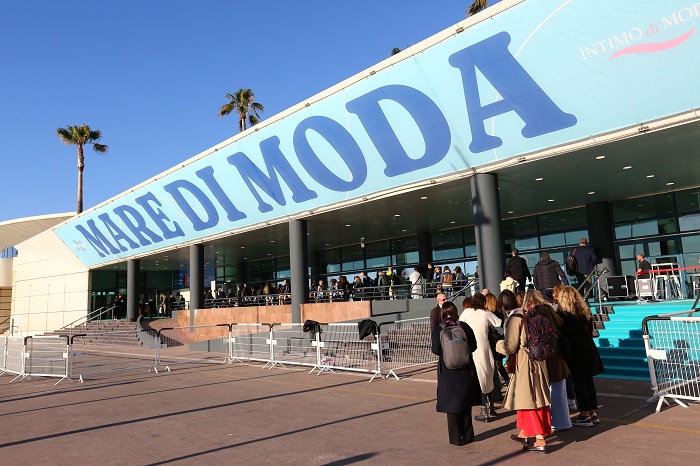
MarediModa, the leading fair for beachwear, underwear, and athleisure sectors, will take place from November 5 to 7 at the Palais des Festivals in Cannes. This year’s event promises over one hundred collections of fabrics and accessories from Europe, alongside a variety of workshops, trend forecasting sessions, and exhibitions showcasing exclusive designs and contract manufacturing.
An unmissable opportunity
Claudio Taiana, President of MarediModa, emphasizes the fair's significance in today's uncertain textile landscape, noting that the event serves as a benchmark for excellence, creativity, and innovation. He highlights that, twenty-two years after its inaugural edition, MarediModa remains committed to fostering a collaborative environment where attendees can discover the finest European textile collections across diverse sectors. Taiana points out the industry's increasing focus on contamination and fluidity in fashion, urging designers to opt for fabrics that are not only technical and creative but also sustainably sourced.
David Shah will present the trend forecasting theme ‘Waterworld’ for summer 2026, featuring style directions through two sessions on November 5 and 6. His talks will delve into the depths of oceanic themes, exploring how water inspires beauty and creativity. Attendees will also gain exclusive access to the Trend Book 2026 and a presentation video, enriching their understanding of upcoming beach, intimate, and athleisure trends.
Spotlight on young designers
A standout feature of the fair is ‘The Link,’ which highlights collections from emerging talents at Europe's leading fashion schools. Young designers will showcase their innovative concepts in beachwear, underwear, and athleisure, culminating in a fashion show on November 6. Finalists include Matilde Balduzzi (Italy), Sebastian Cruciantu (Romania), and Moises Rivero Galvan (Spain) for beachwear; Beghim Genghiz (Romania), Marianna Luca (Italy), and Lucia Trabazos (Spain) for intimates; and Alessia Marenghi (Italy), Aurora Scorrano (Italy), and Nicolai Vulpe (Romania) for athleisure.
MarediModa continues to foster creativity with the Flash project, showcasing how fabrics transform into prototypes, while Seam highlights the craftsmanship of contract garment makers. The ATH Project will present athleisure garments designed by ISGMD, featuring innovative fabrics that anticipate future trends in sportswear.
The MarediModa Creative Excellence Awards 2024 will honor Melissa Odabash and Aguaclara for their contributions to the beachwear and underwear markets. Melissa Odabash, known for blending high fashion with swimwear, and Aguaclara, celebrated for its creative prints and sophisticated designs, represent the pinnacle of industry innovation and responsibility.
Sustainability focus
The Lycra Company will showcase its bio-derived LycraEco Madefiber at the event, emphasizing sustainability in beachwear and swimwear. Alistair Williamson will discuss this innovative fiber on November 5, highlighting its renewable content and performance benefits. Attendees can also experience a VR tour demonstrating the fiber's production process, reinforcing the industry's shift toward eco-friendly practices.
On November 6, Sensil will present its advanced fiber solutions designed for a sustainable future. This session will showcase how precision and expertise in fiber production elevate garments, ensuring they meet the demands of conscious consumers.
MarediModa promises an enriching experience, emphasizing creativity, innovation, and sustainability, essential for industry professionals navigating today’s textile landscape.



